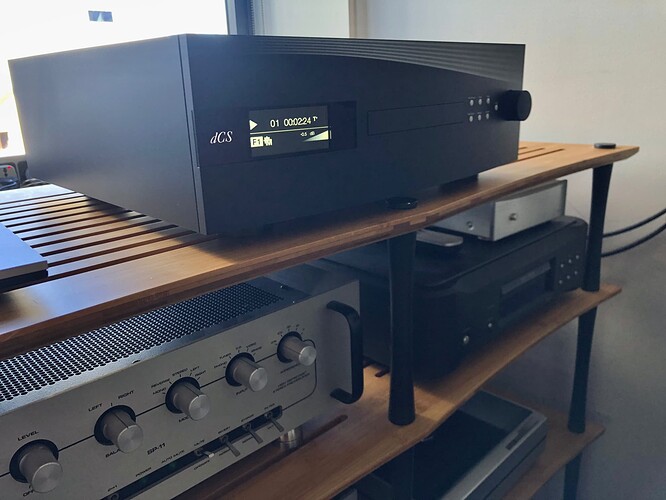dCS is promoting the Rossini APEX review by José Victor Henriques at HiFi Clube:
What surprises me about this (glowing) review is this statement (emboldening mine):
The wide range of facilities comprises phase, channel swap and balance, and level setting – select 2V if you use it as a dedicated DAC and 6V for preamp functions or driving a pair of active loudspeakers. Levels 0.2 and 0.6 are for use with AirPlay.
This doesn’t sit well with me at all, as I use my Rossini Player through a preamp (Ayre KX-R Twenty) and it sounds much better at 6v output with better bass and improved impact.
I do know many pres can’t handle a 6v source, but if yours can, I’d highly recommend you give the 6v output setting a try.
The comment about the lower output voltages being for use with AirPlay makes zero sense whatsoever as the input source has nothing to do with what output voltage sounds best.
This was also an interesting tidbit I didn’t know, though I don’t care much about MQA:
Note: dCS informs that for the USB1 input, such as when playing from a PC, the Rossini will perform the MQA render on previously decoded MQA, but it will not perform a full decode and render. In this situation with the USB1 input, the Rossini is only performing the MQA render, not the decode as that has been carried out by the TIDAL software. But you still get a fully decoded and rendered MQA file – just that these stages are split between TIDAL’s software and the Rossini.
Finally, I admit I wholeheartedly agree with this statement, always have (but bought a Rossini Player anyway ![]() ):
):
Rossini accepts encrypted SACD data too. But only from dCS Transports via Dual AES inputs (2xDSD). I wish it had an HDMI input that I could also feed with unencrypted SACD data (.dff and .dsd) from my Oppo Player. I’ve tried it with a Bryston DAC with HDMI input, and it works just fine.
Something confirmed by Oppo themselves:
DSD Output via HDMI:
If your A/V receiver or audio processor supports native DSD, your OPPO player can send DSD signal over HDMI to the A/V receiver or audio processor. You should connect the HDMI 2 port of the player to your A/V receiver or audio processor since the HDMI 1 port does not transmit DSD signal.

